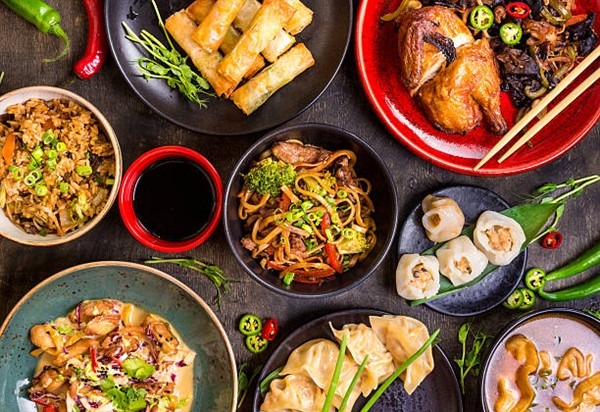Introduction
Chinese cuisine is celebrated worldwide for its exquisite flavours, diverse regional styles, and rich culinary history. From the fiery spices of Sichuan to the delicate dim sum of Cantonese cuisine, China’s culinary heritage offers a treasure trove of delightful dishes.
In this article, we’ll take you on a culinary journey to explore the 10 most popular Chinese dishes. Each dish is a testament to the artistry, balance of flavours, and cultural significance that make Chinese food a global favourite.
General Characteristics of Chinese Cuisine
Before we delve into the delectable world of Chinese dishes, let’s understand some general characteristics that define Chinese cuisine:
Balance of Flavors: Chinese cuisine is renowned for its harmonious balance of flavours. Each dish typically incorporates elements of sweet, sour, bitter, spicy, and salty tastes, creating a symphony of sensations on the palate.
Importance of Texture: Texture plays a crucial role in Chinese dishes. You’ll find dishes that are crunchy, tender, chewy, or crispy, offering a diverse sensory experience with each bite.
Significance of Ingredients: Chinese cuisine places a strong emphasis on the use of fresh, seasonal ingredients. Staples include rice, noodles, a variety of vegetables, and meats such as pork, beef, and poultry.
The 10 Most Popular Chinese Dishes
Now, let’s dive into the heart of this blog post – the 10 most popular Chinese dishes that have captured the hearts and taste buds of people around the world.
1. Peking Duck
Peking Duck, also known as Beijing Duck, is a celebrated Chinese dish with a history dating back to the imperial kitchens of the Ming Dynasty. This dish is a masterpiece of crispiness and tenderness, featuring slices of succulent duck with perfectly crispy skin.
It is traditionally served with thin pancakes, hoisin sauce, sliced scallions, and cucumber. The art of carving and serving Peking Duck tableside is a culinary performance in itself, making it a favourite for special occasions.
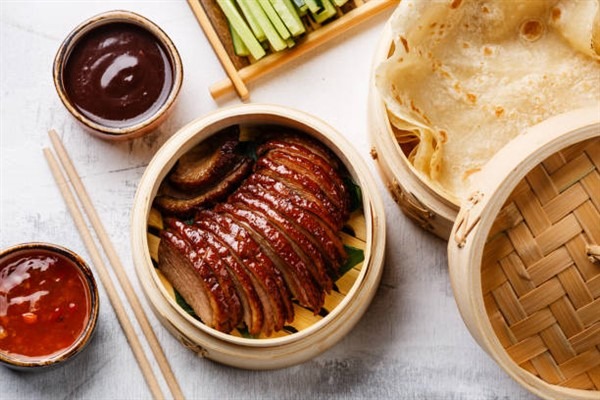
2. Kung Pao Chicken
Kung Pao Chicken is a spicy and flavorful stir-fried dish that hails from the Sichuan province. It’s known for its bold combination of tender chicken pieces, crunchy peanuts, dried red chilli peppers, and a savoury sauce that balances spicy and tangy flavours.
This dish perfectly exemplifies the Sichuan culinary tradition of ma la, which refers to the pairing of spicy and numbing (from Sichuan peppercorns) flavours.
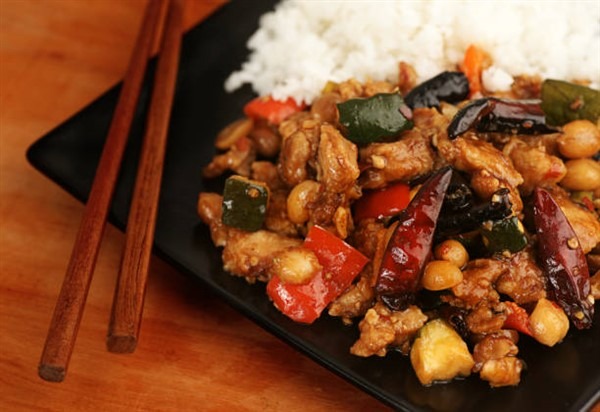
3. Dim Sum
Dim Sum, often described as Chinese small-plate dining, is a culinary tradition rooted in Cantonese cuisine. It encompasses a wide variety of bite-sized dishes, including dumplings, buns, rolls, and small snacks, often served with a selection of Chinese teas.
Dim Sum is not just a meal; it’s a social and cultural experience enjoyed by families and friends gathered around a table, selecting from a seemingly endless array of delectable options.
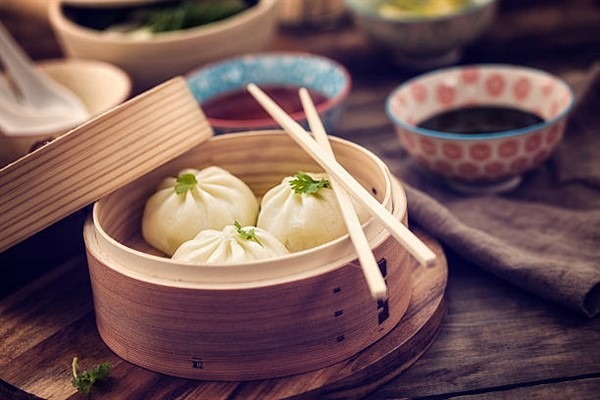
4. Hot and Sour Soup
Hot and Sour Soup is a beloved Chinese soup that boasts both spicy and tangy flavours. This soup typically contains tofu, wood ear mushrooms, bamboo shoots, and sometimes pork or chicken. The spiciness comes from white pepper, while the tanginess is achieved with vinegar. Hot and Sour Soup is known for its ability to awaken the senses and is often enjoyed as an appetizer.
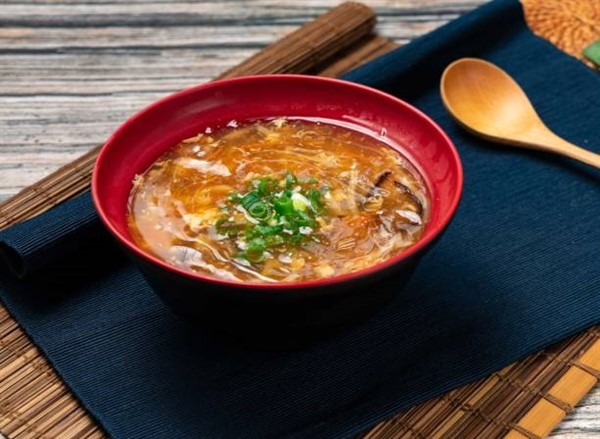
5. Mapo Tofu
Mapo Tofu is a spicy and numbing dish hailing from Sichuan province. It features soft tofu cubes simmered in a fiery chilli and bean-based sauce, often garnished with ground pork or beef and chopped scallions.
The numbing sensation comes from Sichuan peppercorns, which add a unique dimension to the dish’s flavour profile.
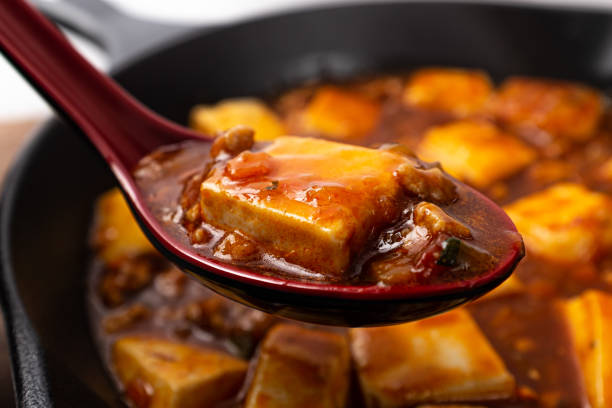
6. Chow Mein
Chow Mein is a classic Chinese stir-fried noodle dish that’s popular both in China and around the world. The dish typically features thin egg noodles stir-fried with a variety of vegetables and your choice of protein, such as chicken, beef, or shrimp. The noodles are coated in a savoury sauce, creating a satisfying and flavorful meal.
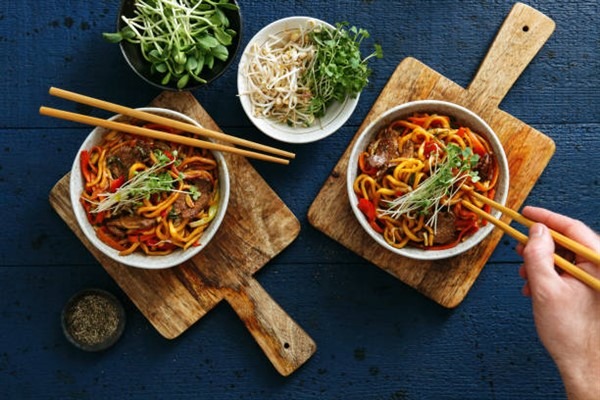
7. Spring Rolls
Spring Rolls are a delightful and crispy appetizer that’s enjoyed in many Chinese cuisines. These rolls are typically filled with a mixture of vegetables, often including cabbage, carrots, and bean sprouts, along with ingredients like shrimp or pork.
They are wrapped in thin spring roll wrappers and deep-fried until golden brown. Spring rolls are commonly served with a dipping sauce, such as sweet and sour or hoisin sauce.
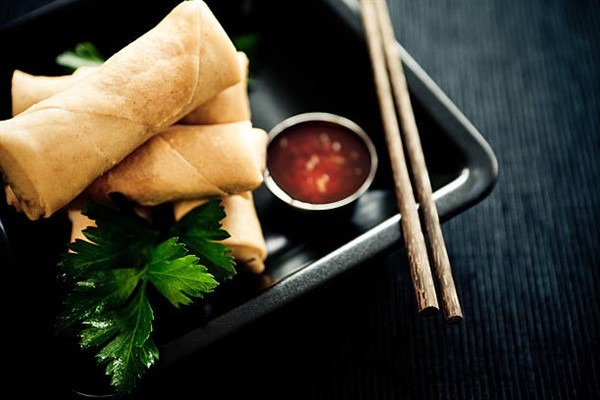
8. Sweet and Sour Pork
Sweet and Sour Pork is a universally loved Chinese dish that showcases a delightful contrast of flavours and textures. It features deep-fried pork pieces that are crispy on the outside and tender on the inside.
These pork pieces are coated in a tangy and slightly sweet sauce that includes ingredients like vinegar, sugar, and ketchup. Bell peppers, onions, and pineapples are often added to enhance the dish’s visual appeal and taste.
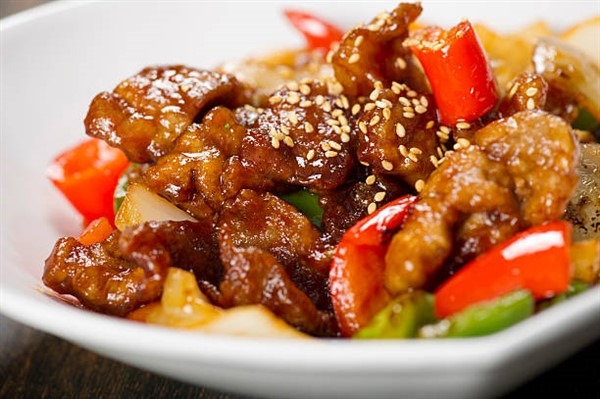
9. Ma Jiang Mian (Sesame Noodles)
Ma Jiang Mian, or Sesame Noodles, is a cold noodle dish with origins in Chinese cuisine. The star of this dish is the rich and nutty sesame sauce, which coats the noodles and provides a delightful flavour. It’s often garnished with fresh cucumber slices and sometimes shredded chicken. Sesame Noodles are a refreshing and satisfying option, especially during hot summer months.
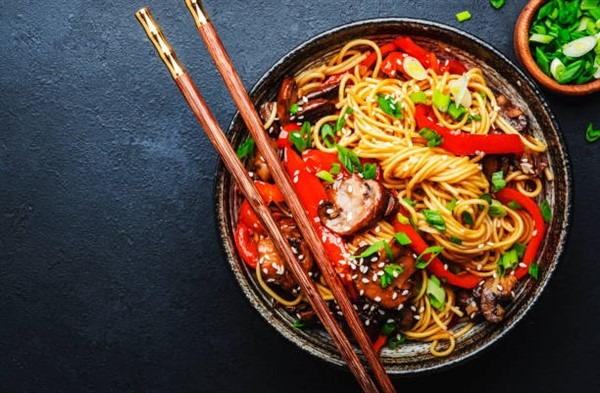
10. General Tso’s Chicken
General Tso’s Chicken is a popular Chinese-American dish that boasts deep-fried chicken pieces coated in a sweet and slightly spicy sauce. While its origins are debated, it has become a staple on Chinese restaurant menus worldwide. The dish is often garnished with steamed broccoli, enhancing both its visual appeal and overall taste.
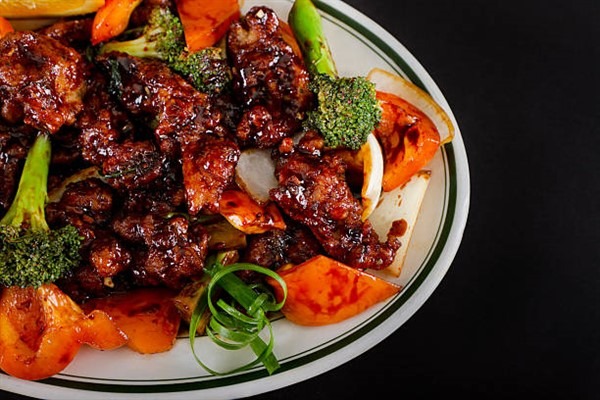
Regional Variations and Influences
Chinese cuisine is incredibly diverse, with distinct regional styles that offer a wide range of flavours and ingredients. Here are some examples of regional cuisines and their influences:
Regional Cuisines in China: China is a vast country with diverse culinary traditions. Regions like Sichuan, Cantonese, Shandong, Hunan, and others have their own unique flavour profiles and signature dishes.
Influence of Chinese Cuisine on Global Food Culture: Chinese cuisine has had a profound impact on global food culture. The popularity of dishes like fried rice, sweet and sour chicken, and dumplings in Chinese-American restaurants is a testament to the global appeal of Chinese flavours.
Ingredients and Techniques
Chinese cuisine relies on a set of key ingredients and cooking techniques that contribute to its distinctive flavours:
Key Ingredients: Commonly used ingredients in Chinese cuisine include soy sauce, ginger, garlic, star anise, Sichuan peppercorns, and oyster sauce, among others. These ingredients provide depth and complexity to Chinese dishes.
Cooking Techniques: Chinese cooking techniques encompass stir-frying, steaming, braising, and deep-frying, among others. These techniques are chosen based on the ingredients and desired texture of the dish.
Cultural Significance of Chinese Food
Chinese food is deeply intertwined with cultural traditions and celebrations. Here are some examples of its cultural significance:
Traditional Chinese Festivals: Chinese New Year, Mid-Autumn Festival, and other celebrations are often marked by specific dishes that carry symbolic meaning. For example, dumplings are a symbol of wealth and prosperity during Chinese New Year.
Symbolism and Superstitions: Chinese culture is rich in symbolism related to food. For example, long noodles symbolize longevity, while the number eight is considered lucky, leading to the popularity of dishes with eight ingredients.
Tips for Enjoying Chinese Cuisine
To fully appreciate and enjoy Chinese cuisine, it’s helpful to be aware of dining etiquette and customs:
Dining Etiquette: In Chinese culture, it’s customary to share dishes family-style, with everyone at the table enjoying a variety of dishes. It’s polite to serve others before yourself and to use chopsticks with finesse.
Popular Chinese Beverages: Chinese tea, including varieties like green tea, oolong tea, and black tea, is commonly served with meals. Additionally, rice wine and baijiu (a strong spirit) are traditional Chinese alcoholic beverages.
Conclusion
Chinese cuisine is a testament to the artistry, balance of flavors, and cultural significance that make food a universal language. Whether you’re enjoying the crispness of Peking Duck, the boldness of Kung Pao Chicken, or the comfort of Dim Sum, Chinese dishes offer a world of flavours to explore.
As you embark on your culinary adventures, consider trying these top 10 Chinese dishes to savor the essence of Chinese cuisine. Remember that food is not just sustenance; it’s a bridge to culture, history, and shared experiences. So, gather around the table, raise your chopsticks, and celebrate the delicious diversity of Chinese cuisine.





